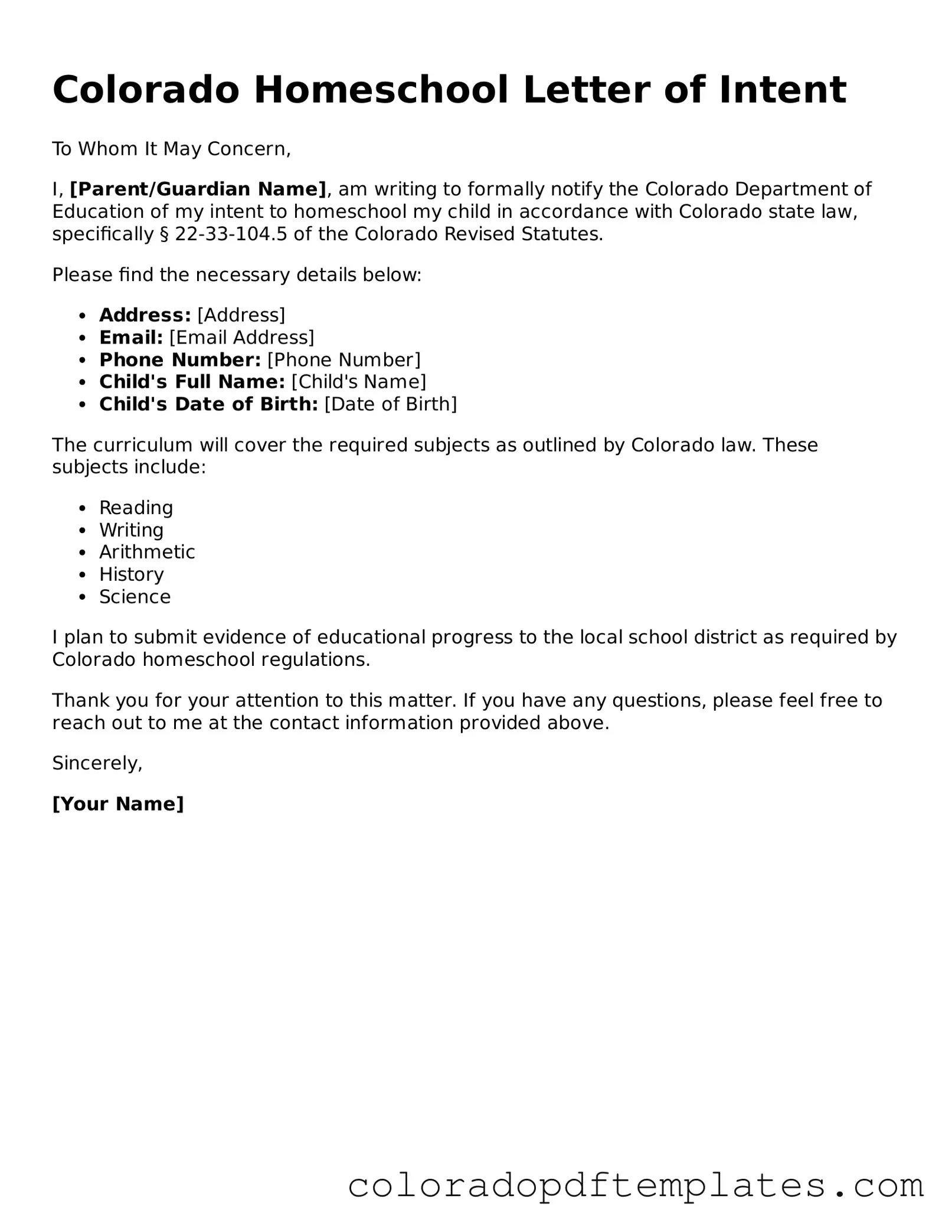The Colorado Homeschool Letter of Intent form is a document that parents or guardians must submit to notify their school district of their intention to homeschool their child. This form is a requirement under Colorado law and helps ensure that the educational needs of homeschooled children are recognized by local education authorities.
Who needs to submit the Letter of Intent?
Any parent or guardian who plans to homeschool a child aged 6 to 17 in Colorado must submit the Letter of Intent. This applies to children who have not yet enrolled in a public school as well as those who are transitioning from public or private schooling to homeschooling.
When should I submit the Letter of Intent?
The Letter of Intent should be submitted at least 14 days before you begin homeschooling your child. It is advisable to send the form as early as possible to ensure compliance with local regulations and to allow for any necessary communication with the school district.
Where do I send the Letter of Intent?
You should send the Letter of Intent to your local school district. Each district may have its own process for receiving these forms, so it's a good idea to check their website or contact them directly for specific submission instructions.
The Letter of Intent typically requires the following information:
-
The name and address of the parent or guardian.
-
The name and age of the child being homeschooled.
-
A statement indicating your intention to homeschool.
Some districts may ask for additional details, so it's wise to review any specific requirements from your local school district.
While there is no mandated format for the Letter of Intent, it should be clear and concise. Many parents choose to use a simple letter format. Including all required information in a straightforward manner is key to ensuring it is accepted by the school district.
What happens after I submit the Letter of Intent?
Once you submit the Letter of Intent, the school district will typically acknowledge receipt of the form. They may provide you with additional information regarding homeschooling regulations, assessments, and resources available to you as a homeschooling parent.
Do I need to submit the Letter of Intent every year?
Yes, you must submit a new Letter of Intent each year that you plan to homeschool your child. This annual requirement helps keep your homeschooling status active and ensures that the school district is aware of your educational plans.
Are there any penalties for not submitting the Letter of Intent?
Failing to submit the Letter of Intent can result in legal complications. The school district may consider your child truant, which can lead to interventions. It is essential to comply with the state’s requirements to avoid any potential issues.
Can I withdraw my child from public school after submitting the Letter of Intent?
Yes, you can withdraw your child from public school after submitting the Letter of Intent. However, it is advisable to communicate with the school to ensure that all necessary paperwork is completed and to avoid any misunderstandings regarding your child's enrollment status.
